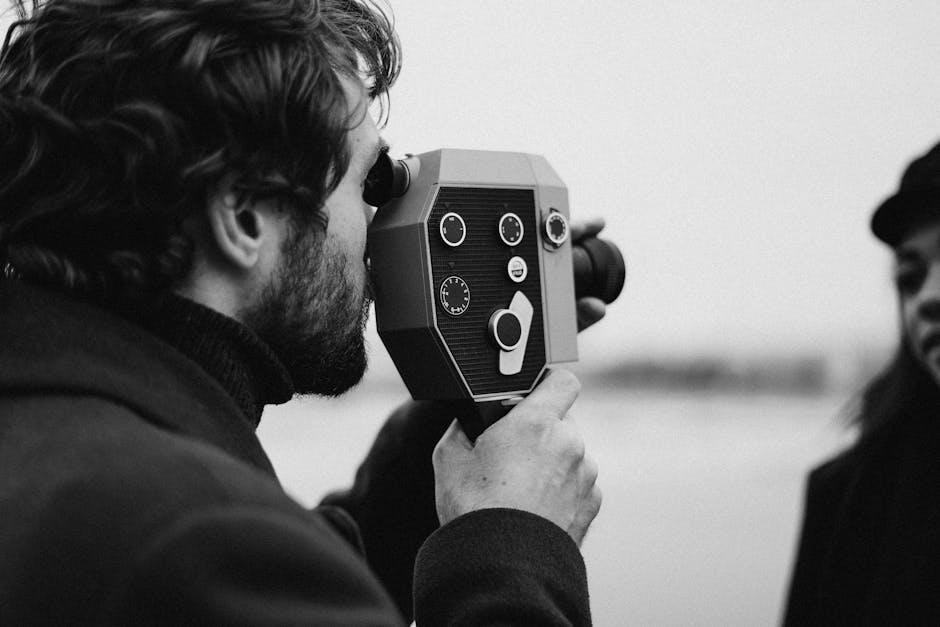In the kaleidoscopic world of cinema, where stories flicker to life and dreams dance on the silver screen, the role of the director is pivotal. These visionaries orchestrate the symphony of storytelling, shaping narratives that echo across cultures and generations. Yet, as the credits roll and the spotlight dims, a pressing question emerges from the shadows: Is there enough diversity among those who helm these cinematic voyages? In an industry that prides itself on creativity and innovation, the quest for diverse voices behind the camera remains both a challenge and a necessity. This exploration delves into the current landscape of mainstream film, examining the strides made and the gaps that persist in ensuring a rich tapestry of perspectives in the director’s chair.
Exploring the Current Landscape of Directorial Diversity
The film industry has seen a gradual shift towards embracing diversity, but the journey is far from complete. Despite notable progress, a closer examination reveals that many voices remain underrepresented behind the camera. Women, people of color, and members of the LGBTQ+ community are still fighting for equal opportunities to helm major projects. The mainstream film industry is often criticized for its reliance on familiar faces and voices, leading to a homogeneity that can stifle creativity and innovation.
- Gender Disparity: Although more women are breaking through the glass ceiling, they still constitute a minority among top-tier directors.
- Ethnic Representation: Directors from diverse ethnic backgrounds are gradually gaining recognition, yet they remain significantly outnumbered by their white counterparts.
- LGBTQ+ Inclusion: While there have been strides in representing LGBTQ+ stories on screen, those leading the projects often do not reflect the diversity of the narratives they portray.
In an industry driven by storytelling, the importance of having diverse voices in directorial roles cannot be overstated. The richness of varied perspectives not only enhances the art form but also ensures that audiences see themselves reflected in the stories told.

Barriers and Breakthroughs in Filmmaking Leadership
In the realm of filmmaking, the quest for diversity among directors often encounters significant challenges. Systemic biases, entrenched in the industry for decades, create barriers that can stifle the voices of underrepresented groups. Financial gatekeeping and limited access to resources further compound these issues, making it difficult for diverse talents to break through. Moreover, the industry’s reliance on established networks often means that opportunities are not equitably distributed, resulting in a homogeneous leadership landscape.
Yet, amidst these challenges, there are notable breakthroughs. The rise of independent filmmaking and streaming platforms has democratized access, allowing a broader array of directors to showcase their work. Mentorship programs and diversity initiatives within studios aim to cultivate a more inclusive environment. Film festivals dedicated to highlighting diverse voices have gained prominence, offering a platform for new perspectives. As these efforts continue, the hope is that they will lead to a more varied and representative cadre of filmmakers at the helm of mainstream cinema.

The Impact of Diverse Voices on Storytelling
Incorporating a wide array of perspectives into filmmaking not only enriches the narratives but also fosters a more inclusive cinematic landscape. Diverse voices bring unique experiences and viewpoints that challenge conventional storytelling and open up new avenues for creativity. This diversity can manifest in various forms, from cultural and ethnic backgrounds to gender and sexual orientation, each contributing to a more nuanced and authentic portrayal of stories.
- Cultural Depth: Directors from different backgrounds infuse films with cultural nuances, adding layers of authenticity.
- Innovative Narratives: Fresh perspectives lead to innovative storytelling techniques and plot developments.
- Broader Representation: Diverse voices ensure a wider range of characters and stories, reflecting a more global audience.
By amplifying these voices, the film industry not only becomes more representative but also taps into a vast reservoir of untold stories. As audiences become more diverse, the demand for varied storytelling continues to grow, pushing the boundaries of traditional narratives and expanding the horizons of cinematic expression.

Pathways to Inclusivity: Strategies for Change in Cinema
In the quest for a more inclusive cinema landscape, it’s essential to explore strategies that can pave the way for change. One approach is to actively support emerging filmmakers from diverse backgrounds. By providing mentorship programs and funding opportunities, we can nurture a new generation of storytellers who bring fresh perspectives and narratives.
Another strategy is to implement inclusive hiring practices. This involves encouraging studios and production companies to prioritize diversity in their leadership roles. By having a variety of voices in decision-making positions, the industry can better reflect the rich tapestry of human experience. Additionally, fostering collaborations between directors from different cultural backgrounds can lead to innovative storytelling techniques and cross-cultural exchanges.
- Mentorship and Training: Establish programs that connect experienced directors with aspiring filmmakers from underrepresented groups.
- Funding Initiatives: Create grants and financial support systems specifically aimed at projects led by diverse directors.
- Inclusive Leadership: Encourage studios to diversify their executive teams to ensure a wider range of stories are greenlit.
- Collaborative Projects: Promote partnerships between directors from different backgrounds to blend unique storytelling styles.

